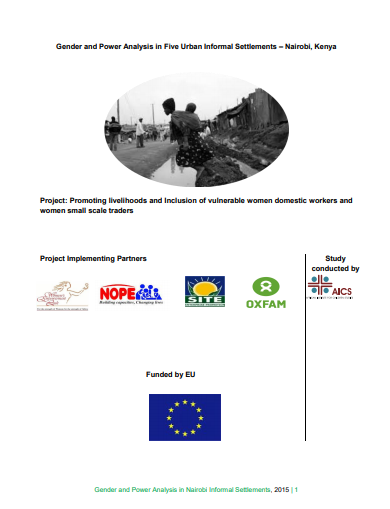Resource information
The World Bank (2015) classifies Kenya as a lower middle income country and one of East Africa‘s fastest growing economies. According to Society for International Development (SID) however, Kenya remains one of the most unequal societies when compared to of Uganda and Tanzania (SID, 2004). Inequality therefore remains a key challenge to Kenya. In order to respond to this challenge, there is need for a clear understanding of the causes, nature, effects and manifestations of socio-economic inequalities (SID, 2006). A study by Oxfam (2009) indicated that the levels of inequality were very high in the informal settlements in Nairobi leading to human insecurity and under development. In these settlements, huge disparities exist in the levels of empowerment of men and women. Women are at greater risk of unemployment, physical and gender based violence. In addition, most households in these informal settlements are worst hit by poverty. The heads of the households often rely on the informal economy as their main or only source of income. The sources of income and livelihoods include seasonal employment, casual labour, home based self-employment and subsistence agriculture among others.

